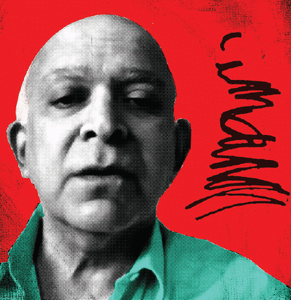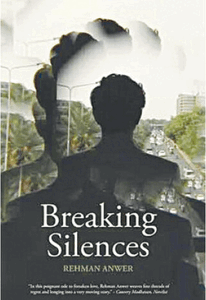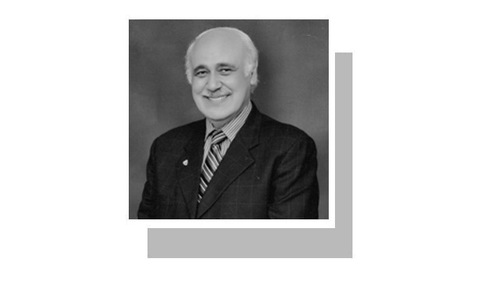This year’s Lahore Literary Festival (LLF) provided space for many book launches and conversations with an array of authors from different parts of the world. From architectural influences derived from the Islamic world, to the historical significance of horses in the Subcontinent, audiences were spoiled for choice with the variety of topics discussed.
Marina Wheeler was one such writer who paid homage to her roots in the launch of her book, Lost Homestead: My Mother, Partition and the Punjab. Offering different perspectives on the British empire and Partition, Wheeler’s memoir traces her mother Kuldip ‘Dip’ Singh’s journey during the Raj and her experience of Partition.
Wheeler is a barrister and Queen’s Counsel who specialises in public and human rights law, and was formerly married to current British Prime Minister Boris Johnson. Speaking with Nelofar Bakhtyar, she explained how surprising it was for her to not just explore different perspectives on Partition, but to find out how controversial the topic still is in the United Kingdom, Pakistan and India. “With the passage of time, I realised our understanding was not getting deeper, but may be becoming more two-dimensional. I felt it would take some effort to try and bring back the nuance in the discussion, but also convey where the points of difference arise and why. In the UK, we have a very romantic idea of empire, but that certainly was not the way that I was brought up.”
Wheeler also delved into how there is more emphasis in the UK on atrocity and apologising for having imposed this system on an unwilling people. “For me, it was really fascinating to hear from my mother a life in which British people didn’t appear very much but also, to the extent as she spoke of it and as her father saw it, they were held responsible for bringing a great degree of prosperity and order to the area [as well as] education. Her narrative from pre-Partition life in Sargodha was a good provision of schools with an emphasis on different languages, where communities lived together.”
Another book launch was of Stealing from the Saracens: How Islamic Architecture Shaped Europe by cultural expert Diana Darke, who spoke about the history of Islamic architecture’s influence on Europe’s cathedrals, palaces and public buildings.
The LLF, as always, had a diverse and eclectic array of topics under discussion this year
The book was published in August 2020 and attracted a lot of attention and controversy. “The reason I even wrote this book is because of the fire of Notre Dame in April 2019, when suddenly the world was in mourning and there was a huge outpouring of grief for this great symbol of European and French identity going up in flames. It startled me to realise that most people do not know that this building is not as European as they seem to think. Most of the features of its architecture are derived from Islamic architecture,” she explained.
At the LLF, Darke embarked on a visual journey, to tell a story of misinterpretation, ignorance and whitewashing of the profound Islamic influence on many European buildings, including the Notre Dame cathedral in Paris.
An interesting addition to this year’s line-up was Dutch author Marieke Lucas Rijneveld who, along with translator Michele Hutchison, won the 2020 International Booker Prize for her debut novel, The Discomfort of Evening. The session began with an introduction by Wouter Plomp, ambassador of the Netherlands to Pakistan, and joining the panel were interpreter Johanna McCalmont, reporter Nur Nasreen Ibrahim and Eman Omar.

The novel is told through the eyes of a 10-year-old girl, Jas, who lives on her conservative Christian parents’ farm, as the family navigates the loss of a child. Drawing on her own life, Rijneveld explained how it took her six years to write the book, but she knew all along that it had to be about her brother, who passed away when she was three years old.
“I didn’t know how to give the story a form because I was so young myself at the time,” said the 29-year-old writer. “I knew there was going to be this sense of discomfort that it was starting with. You have Jas in the book, who is from a family that doesn’t talk much about death, grief or sexuality. There is no support for her as she is growing up.”
Rijneveld admitted that some of the scenes were difficult to write and there were times she had to question if she wanted to keep certain sections in the book or not. “But a friend told me to be unrelenting. As a writer, you need to not avoid certain issues and topics and you need to take on and write about difficult topics.”
During the keynote session, ‘The Neighs Have It: Mythology of Horses in Pakistan’, participants were in for an interesting presentation as Wendy Doniger traced the historical, religious and mythical presence of horses in South Asia. Doniger is the author of over 40 books, and the Mircea Eliade Distinguished Service Professor Emerita of the History of Religions at the University of Chicago.
She highlighted how most of the land did not welcome the horses that were brought in by the many different invaders — the Vedic peoples, the Greeks, Scythians, Turks, Mongols and the British. The animals themselves were also not much suited to the climate. “It is not easy for horses to find good grazing in South Asia,” she said. “They were not well adapted to conditions in most of the area, most of the time,” as their hooves would soften in the wet soil during the monsoon season and pieces would break off, causing sores. This contrasted sharply with the extremely hot, dry season, causing the hooves to dry out — which can be very painful. However, in parts of South Asia, much of what now forms Pakistan, many of the best horses of the subcontinent were bred.
The representation of horses in art and literature was also an element deeply explored in the session. “Hindus and Muslims told stories about horses. Horses not only affected the practical relationship between Indians and the people they called Turks, but also functioned in art and literature, as a symbolic gauge of shifting attitudes within those relationships. Many Hindu rituals and myths involved Arabian horses and/or Muslim riders. Despite, or because of, the political domination of the Delhi Sultanate and the Mughal Empire, the Indian stories from this period generally depict Arabian horses and their Muslim riders in a favourable light.”
The writer is a senior content writer at the Lahore University of Management Sciences (Lums)
Published in Dawn, Books & Authors, February 28th, 2021



































